When I was growing up, my parents raised me on a steady diet of television. Back then in the early 1960’s my favorite shows were “Diver Dan”, “The Jetsons”, “The Man from U.N.C.L.E.”, “Get Smart” and “I dream of Genie”. These shows influenced me as I grew up. It was all about adventure, space and fighting those dastardly communists. Yikes!

I used to love Saturday mornings.
it would be a morning full of cartoons. I would go get a bowl of sugary cereal, add milk and even more sugar, and sit there in front of the television screen absorbing all the great child entertainment. My favorite cereals from those years were “Froot Loops”, “Coco puffs”, and “Rice Krispies”. I was, I tell youse guys, just a normal kid.
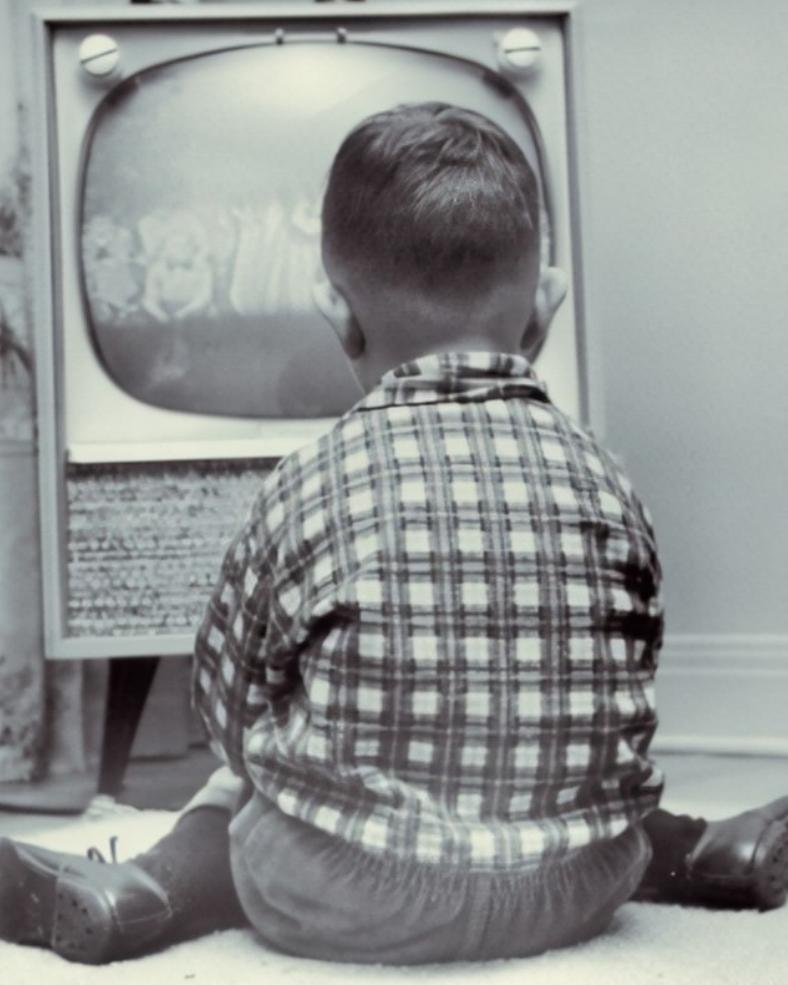
In those days, mind control via electronic media was unheard of. It had to be introduced and perfected, which it was indeed, over the next two to three decades.
Now we have very advanced systems to control the minds of people, and they do work. But every now and then, the absurdity of it all becomes so glaringly obvious. And it’s laughable. Really.
If it wasn’t so absolutely sad.
From MoA. Classic.
There seem to be general meme directives for ‘western’ outlets with regards to official enemies.
Russia is said to weaponize everything. The position of China is not (yet) seen as in military terms. The emphasis is on economic competition. Any undeniable Chinese achievement must be declared to have been a bad investment. The directive thus reads:
"When writing about China's achievements - question their costs."
The results:
- Global Markets – 1st quarter 2007 : China powers ahead – but at what cost?
– Fin Law, Feb 09, 2007 - China pumps up the Cambodian economy, but at what cost?
– Taipei Times Apr 07 2011 - Luxury Property in China: Boom, but at what cost?
– Spears, Oct 18 2011
- Tibet: Tourism Rises, But At What Cost?
– UNPO, Dec 28 2011 - China brings jobs to Ethiopia but at what cost?
– Horn Affairs, May 31 2012 - China: smartphone market domination…but at what cost?
– GFK, Feb 27 2014 - China wants the Gold but at what Cost? – Disturbing Road to Olympic Stardom
– Linkedin, Aug 14 2016 - Podcast: China Aims for Bluer Skies Ahead, But at What Cost to Commodity Demand?
– SPGlobal, 2017 - Peter Bart: Hollywood Has Appetite For China’s Big Bucks, But At What Cost?
– Deadline, Mar 2 2017 - China is driving a boom in Brazilian mining, but at what cost?
– China Dialogue, Jul 27 2017 - Chinese Tech Firms Are at the Cutting Edge of Artificial Intelligence — But at What Cost?
– Global Voices, 28 Aug 2017 - China Invests in Environment – but at What Cost?
– US News, Apr 20 2018 - China’s Belt and Road poised to transform the Earth, but at what cost?
– Mongabay, Apr 24 2018 - China’s Belt and Road poised to transform the Earth, but at what cost to the environment?
– Eco Business, Apr 25 2018 - China May Become the World’s Leader in AI. But at What Cost?
– China File, Jul 30 2018 - President Xi pledges $60 Billion to African Countries, but at what Cost?
– Medium, Sep 8 2018 - Vatican–China relations are warming up, but at what cost?
– East Asia Forum, 23 Oct 2018 - Gene-edited babies: China wants to be the world leader, but at what cost?
– The Conservation, Nov 26 2018 - China’s economy looks to be stabilising, but at what cost?
– France24, Apr 17 2019 - China’s Big Cities Get Cleaner Air, But at What Cost?
– Caixing, Oct 26 2019 - China’s Experimental Cure for Cancer
China’s curing cancer faster and cheaper than anywhere else. But some worry they may be going too fast.
– Bloomberg, Dec 12th 2019 - China is getting smarter – but at what cost?
– BBC, Dec 24 2019 - Hou Jianbin wants to educate China. But at what cost?
– Protocol - A better, stronger China after the epidemic? But at what cost?
– Think China, Feb 21 2020 - China May Forge Ahead of the Us in AI Chip Race, but at What Cost to Both?
– CIGI, Apr 9 2020 - China’s Three Gorges Dam may be safe for now, but at what cost?
– Dams, Rivers and People, 27 Jul 2020 - Serbia has rolled out the red carpet to China – but at what cost?
– Euronews, Oct 08 2020 - The BRI’s Footprint in the Lower Mekong Region Myanmar, Thailand, Laos, Cambodia, and Vietnam all need infrastructure—but at what cost?
– RosaLux, Dec 15 2020 - Chinese PD-1s secure broad reimbursement, but at what cost?
– Pharmaletter, Dec 28 2020 - Green Transition in China: At What Cost?
– Green Europe Journal, 16 Jan 2021 - Wuhan one year on: The city that appears safe from Covid – but at what cost?
– Telegraph, Jan 23 2021 - China’s economy grows, but at what cost? (vid)
– SCMP, Jan 27,2021 - China Is Imposing Strict Lockdowns To Contain New COVID Outbreaks. But There’s A Cost
– NPR, Sep 2 2021 - China keeps virus at bay but at what cost?
– Sioux City Journal, Sep 21 9 2021 - China keeps virus at bay at high cost ahead of Olympics
– ABC News, Sep 21 2021 - China celebrates Meng Wanzhou’s return as a victory — even at the cost of its global image ´
– CNN, Sep 28 2021 - Clean Air at What Cost? The Rise of Blunt Force Regulation
– US China Dialogue, Oct 21 2021 - China Rewriting Economic Narrative – But At What Cost?
– BMF, Oct 27 2021 - China’s ‘Zero Covid’ Efforts Come With a Cost
– New York Times, Nov 12 2021 - China is now controlling the weather. What’s the environmental cost?
– Euronews, Dec 9 2021 - Ultra-leftist voices are making themselves heard in China, but at what cost?
– SCMP, Dec 24 2021
Yah. There’s also an obsessed foreign policy subset of “weak/declining” china …
- https://foreignpolicy.com/2020/12/07/china-weak-dangerous-china-nightmare-dan-blumenthal-review/
- https://www.forbes.com/sites/miltonezrati/2021/03/18/chinas-apparent-strengths-are-really-weaknesses/
- https://www.economist.com/films/2021/06/25/what-is-the-weak-spot-of-chinas-economy
- https://www.brookings.edu/opinions/chinas-weakness-is-what-makes-it-so-dangerous/
- https://foreignpolicy.com/2021/09/24/china-great-power-united-states/
- https://foreignpolicy.com/2021/10/18/china-danger-military-missile-taiwan/
- https://www.bloomberg.com/news/articles/2021-11-29/china-s-economy-set-for-another-weak-showing-as-factories-slump
I read a few articles on China’s high speed train system, and in the most recent the cost versus revenue was a worry/criticism, even though it would be easy to argue or at least discuss about positive externalities worthy of subsidies.
Similar cost related criticism was laid on the huge program to develop new gas fields in Eastern Siberia and connect them with pipelines to China. It seems to be true that the long term contracts signed with China when the natural gas prices were very depressed were not best possible, but since those projects have to be considered in 20-50 year time frame, it was silly even then. Now the concerns about profitability of delivering natural gas to China in the future look hilarious.
There is an objective aspect in some “cost/global” articles. China is dominating so many commodity markets that decisions impacting import and export of China have tremendous impact on importers and exporters alike.
Most glaring is the lack of “at what cost” questions concerning the West. EU delays approval of North Stream II, but at what cost? Technocrats decreased investments in fossil fuels in EU and reliance on so-called clean fuels, but at what cost?
Both are phenomenal.
Madam Baerbock speaks her mind, but at what cost? This girl sends markets to panic which is not a part of her job description.
Ukraine “decreases reliance on Russia”, but at what cost?
Some estimate that the resulting losses are many times larger than gains from “western orientation”, western commentators do not attempt any such calculations. Freedom is worth every price if someone else pays for it (USA likes when the cost is born by EU, and EU likes when Ukrainians hold the short end of the stick).
Some thoughts…
Now I know to read any title that contains ‘China’ and ‘at what cost’ because it threatens the cult of U.S. hegemony.
1. Articles about environment: After skimming these articles, I agree, the ‘at what cost’ was so inappropriate for the content, it does look like it was planted, ‘will they succeed’ would have been more natural for these articles. Air quality has previously been notoriously bad in China, ongoing efforts to improve it was a very good thing.
2. articles about AI: ‘threatened by U.S.’ would be most accurate or some suitable alternative. This group of headlines says that China is vulnerable in the chip area. There is a condescending tone because it says, ML (Machine Learning) is data sets and processing power, and not so much about innovation, this is true. But I would not discount China’s ability to innovate. In using AI to implement a police state, ‘at what cost’, is appropriate here, as it conjures up everyone’s worst fears, even for our own govt. Pointing out how ML can be abused by a govt is a good thing. But even better is pointing out how it has eliminated rapes, kidnapping, child abductions, and fraud by leaderships inside of China is a great thing.
3. I can see how ‘at what cost’ can be used for the other categories but agree that the repetitious use wreaks of information war.
Infographic
Global Times provides this excellent infographic aimed directly at BigLie media’s propaganda meme as it’s titled, “China’s commitment to the world in 2021.”
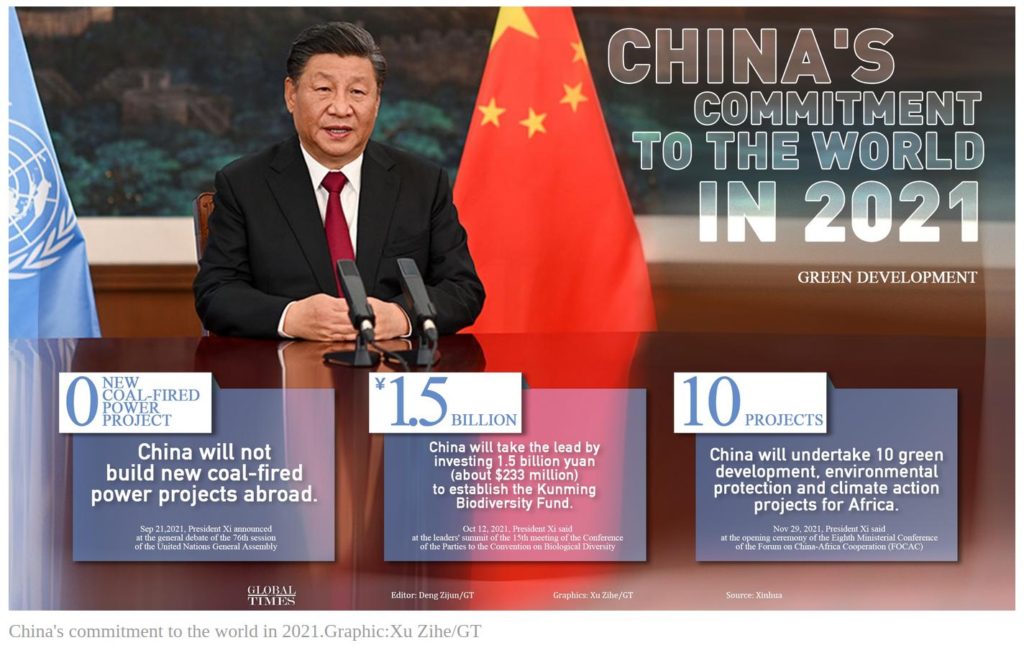
Number two…
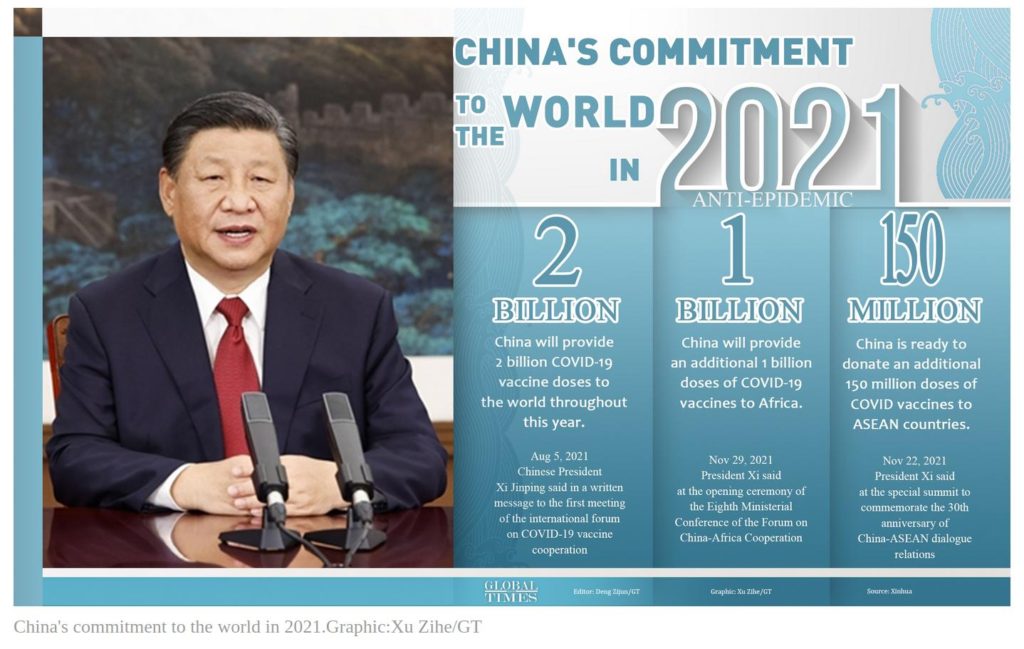
Number three…
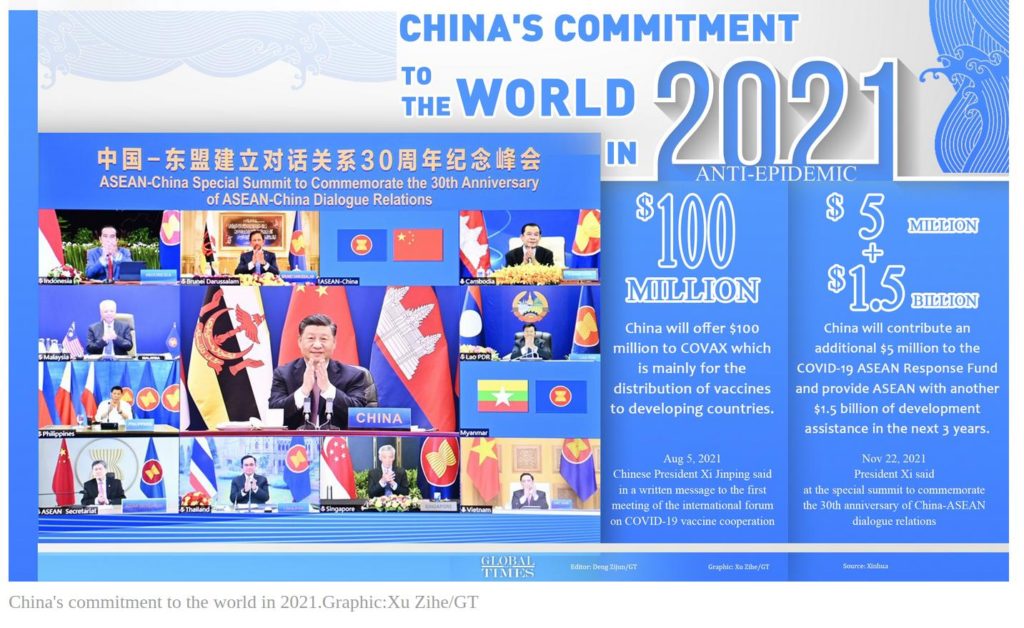
Number four…
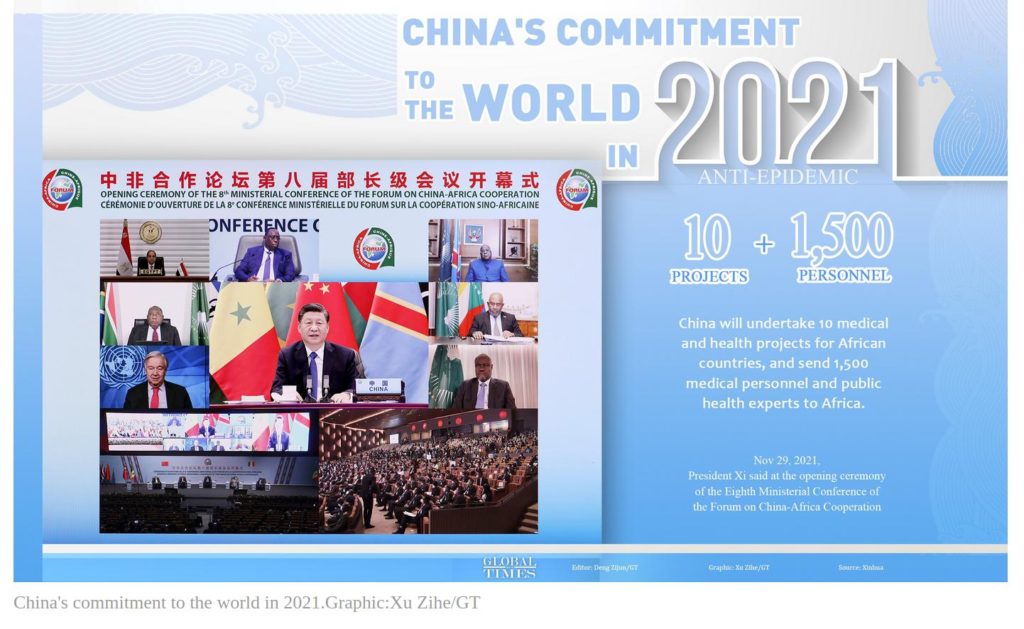
I am “chomping at the bit” in anticipation to see the United States versions of these meme’s.
Here’s an article out of Laos…
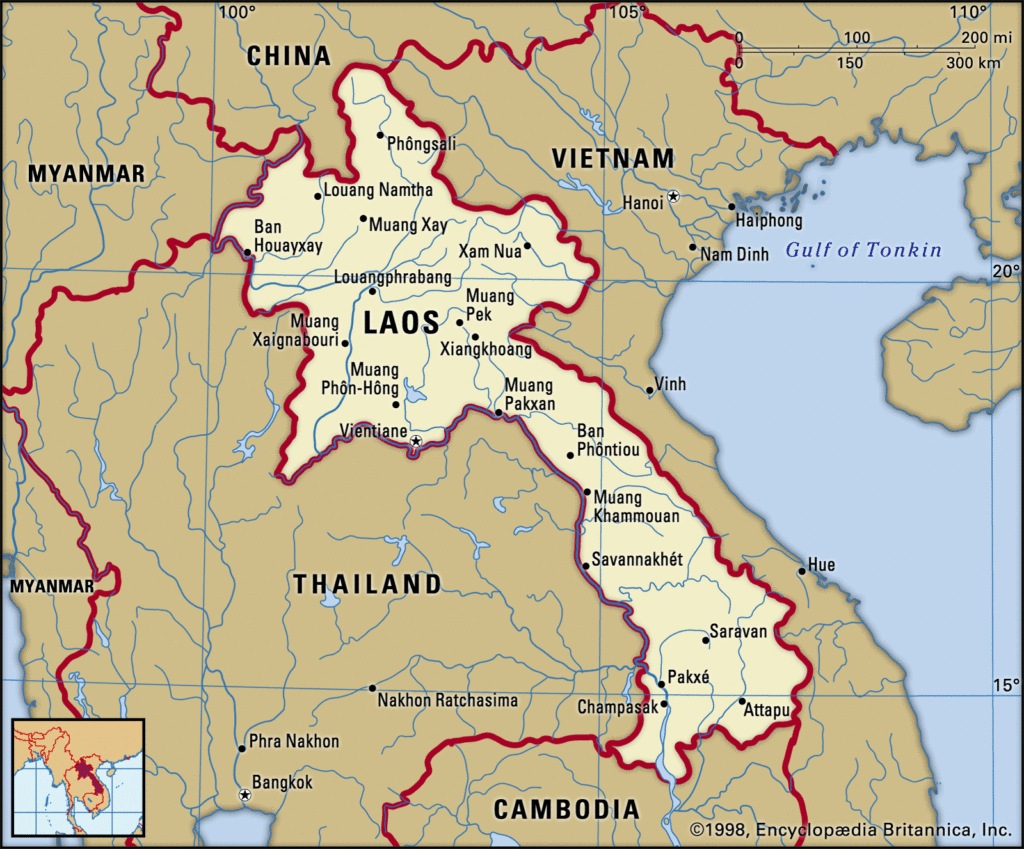
‘The country that bombed you is your friend. The one that built your new railway is your enemy’
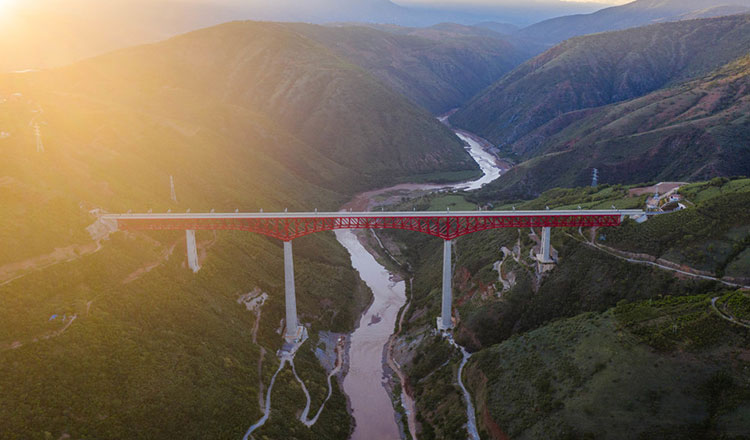
This is the Western media’s bizarre messaging to the people of Laos, a nation that was carpet bombed by America, and which is now being vilified for accepting a new $6 billion railway line paid for by China.
Thursday was National Day in Laos, a celebration marking 46 years since the landlocked Southeast Asian nation deposed its monarchy and became a revolutionary communist state, an effort which was supported by Vietnam.
This year, the anniversary had added significance, as it saw the opening of a major new project, an electrified high-speed and freight railway system connecting the capital city, Vientiane with its northern neighbour, China.
The $6 billion project is part of the Belt and Road Initiative, and has been hailed as one of its flagship achievements. It is the first commercial and industrial railway in Laos, which, given its geography and the fact it is surrounded by mountainous terrain, has not previously had many options to expand its exports and generate economic growth.
Now, though, it has a direct rapid link into the world’s second largest economy and the world’s largest consumer market by population, and a connection to the booming ports of Guangdong. In terms of what it will bring to Laos, it is a game changer. So, what’s not to like about it?
To nobody’s surprise, the mainstream media have responded to the railway with the usual anti-China negativity. A plethora of articles sought to paint the project as a ‘debt trap’, promoting the accusation that Beijing loans countries money for projects they cannot afford and then exerts political leverage over it.
The Financial Times, for one, ran with a cynical article headlined ‘Laos to open Chinese-built railway amid fears of Beijing’s influence’. It implied that somehow Laos feels threatened or fears the construction of this very pioneering railway project (which the country’s own leader made sure he was the first to travel on). This suggestion of ‘fears of Chinese influence’ has become a common feature on such stories, which seek to cast doubt over anything positive China may be achieving or doing.
A common Twitter meme among pro-China users which has followed from stories like this asks: “but at what cost?” highlighting the frequency of such negative coverage.
And if you Google “China, but at what cost?” you can find a great many examples of articles published in major outlets. In producing such pieces, the broader intention is to depict Beijing’s actions as unwanted, threatening and constantly facing opposition. In the case of the Laos railway project, the ‘problem’ is it was financed by debt, and therefore it is not a positive step.
Yet this argument is as insulting as it is outright insensitive to Laos’ contemporary history. Anyone who knows anything about Laos’ relatively recent past will be well aware that China is not the country to fear, but the United States – the nation that dropped over 260 million cluster bombs on Laos and completely devastated the country as an extension of the Vietnam War, making it the most single bombed nation in history and claiming over 50,000 lives.
Many of these bombs remain unexploded and litter the countryside of Laos, continuing to kill civilians. In constructing the new railway, workers first had to clear the unexploded ordnance. How is it that the world and the mainstream media remain indifferent to this atrocity? And how, by any stretch of the imagination, can they claim that China is the true threat to Laos, and that the US and its allies act in the true interests of the country?
Herein lies the problem. Such a mindset symbolizes the elitism, chauvinism and self-righteousness of the countries of the West, which are ideologically inclined to believe that they stand for the ‘true interests’ of the ordinary people in the countries they profess to liberate.
Western politics peddles the assumption that through countries’ adherence to liberal democracy, they exclusively hold a single, universal, impartial and moralistic truth, derived from the ontological legacy of Christianity, and they have an obligation to introduce it to others. The West always acts truthfully and in good faith, while its enemies do not. And therefore, so the logic goes, any policy the US or its allies direct towards Laos is motivated by sincere intent and goodwill for its interests, and in turn, anything that China does is bad-faith, expansionist and power-hungry behaviour motivated by a desire to influence or control the country.
This creates the bizarre scenario whereby Beijing is depicted as evil and sinister for building a railway to connect to its neighbour – but we should forget America dropping millions of bombs on the country because it was done in the name of ‘freedom’. I’m sure you can imagine how the media would react if China did the latter.
Those who push this narrative predictably omit any insight into how Laos itself thinks about the situation. Another piece which took a similar stance, published in The Diplomat, was titled ‘Laos-China Railway inaugurated amid mounting debt concerns’.
But like the ‘fears of Beijing influence’ expressed in the FT, who are these ‘concerns’ from? The report cites the “Washington-based Center for Global Development” and what it merely describes as a “US based analyst” as sources who push the ‘debt trap’ narrative. But nowhere in any of these articles is there an actual voice direct from Laos who raises any fear of China, or objects to the railway’s existence.
Instead, they simply talk on the country’s behalf, obscuring the reality that a communist state which suffered from extreme levels of aggression from the US probably does not see its northern neighbour – and its most important economic partner – as a threat to its regime. With many more articles running variations of the same theme, there is minimal effort given to the consideration that the railway will help the country rapidly expand its exports, sustain greater growth and help Laos pay for the project.
The Laos-China railway has provided a textbook example of how the media can distort a story in order to fortify an incriminating narrative, while brushing aside brutal realities. We are shown a lopsided world, where the travesty of a country being bombed into oblivion with consequences lasting decades is ignored, and the preference is to try to convince us how that same country’s first commercial railway line is, in fact, what it should really be scared of.
It is a demonstration of how the power of the English-language, pro-US media distorts reality itself and how they can blow up an issue, yet hide the truth, by professing to care dearly about the wellbeing and interests of a country which the West poured death, destruction and carnage upon in the name of freedom.
Here’s an article out of Cambodia…

Cambodia-US Relations: Cambodia is not the enemy of the US

America believes that Cambodia is China’s vassal state. And it does everything to solidify that belief. At the end, they justify their sanctions against Cambodia for being too friendly with China whom the US considers as the “malign actor” and “revisionist state” to the hegemonic order with the US at the top.
But then how much is called overdependent? How much sanction is considered enough against the alleged malign actor?
Americans warn Cambodians to beware of lucrative interactions with China. But Cambodia’s trade and investment with China is less than 10% of the whole of Southeast Asia. Statistically speaking, countries that are close with the US such as Singapore and Vietnam are in fact the highest beneficiaries from trade and investments with China.
Media that are anti-China can lie about Cambodia’s overdependence on China but numbers don’t lie. Impartial academics should look into those number by themselves and make comparison to the whole region to verify and question their established prejudice. The so-called independent minds should not become the trash collectors of all bad press about Cambodia with many hyperlinks to the anti-Cambodia puppet media and organizations.
Cambodia is currently the most sanctioned country in Southeast Asia, even more than the military junta in Myanmar, and the fact is that there is no sanction at all against communist Vietnam, who has no freedom of the press, freedom of assembly, and freedom of expression. What does anyone say to these? None at all.
What does democracy mean to America when Cambodia is being treated this way by the American government and congress on the aspect of democracy and human rights?
Cambodia is among the few countries in Southeast Asia that has regular multi-parties election.
Cambodia is among the few countries where press, both domestic and foreign, operate freely, and some of the US’ affiliates like the Voice of America, the Voice of Democracy, and Radio Free Asia, bombards daily with verbal diarrhea against Cambodia as if Cambodian people are living in hell. Nothing can be seen positive from the point of view. And they still say that Cambodia has no freedom of expression.
Facebook operates freely in Cambodia. Internet freedom is among the fullest compared to countries in the region. Cambodian people are addicted to Facebook freedom. They really enjoy it. So long as they don’t defame, libel, slander, promote uprising, treason and the toppling of government, they are free to say anything.
Cambodia is hosting more than 5,000 civil society organisations but human right groups in Cambodia, funded by foreign governments, still has liberty to say that Cambodia lacks freedom of association as compared to Viet Nam which has only one state union. In the US, these organisations would have been banned or classified as “foreign agents”. According to the Foreign Agents Registration Act (FARA), passed in 1938, it is required that agents representing the interests of foreign powers in a “political or quasi-political capacity” disclose their relationship with the foreign government and information about related activities and finances.
But such kind of civil society organisations in Cambodia are hiding behind protection of their foreign embassies crying foul that Cambodia’s Law on NGO (LANGO) is too restrictive because they simply cannot disclose their finance and activities that are fundamentally foreign-owned, foreign-initiated and foreign-led.
What does America want from Cambodia? Does it want Cambodia to become the enemy of China and to fight China on America’s behalf? Where does Cambodia’s national interest stand in supporting the US and in making China its enemy? Where is the right to self-determination of Cambodia that the US often says that it respects fully? Does the US want Cambodia to commit suicide to express its sincerity in wanting friendship with the US?
Cambodia is considered as “gold-standard” in terms of cooperation with the US in area such as POW/MIA. Cambodia even accepted 300 Afghan refugees when only a few countries in the region are willing to do so.
But what does Cambodia receive in return? The US cut off scholarship for military students who are already in the US. The US imposed visa sanctions against high-ranking officials in the whole Ministry of Foreign Affairs and International Cooperation.
They are sanctioning the very individuals that act as the main bridge of friendship and relations between Cambodia and the US.
This is too cruel a treatment from a friend. The US is treating Cambodia like an enemy.
While the US says that it stands with Cambodian people for its independence and march towards stable and peaceful democracy, Cambodia is in fact one of the most sanctioned countries in Southeast Asia, even worst than the so-called US enemies.
People might probably say sometimes, frankness is needed among sincere friends. But a friend should not express solidarity through piles of sanctions like what the US is doing towards Cambodia right now.
How could a friend be so cruel to treat another friend that way? What does friendship mean for the American government and congressmen?
Is this the best treatment that the American government can afford to Cambodia, which is the last beacon of hope of democracy in the Mekong region? Which country in the Mekong region that fares better than Cambodia in terms of democracy and human rights?
Cambodian people like America; they like American democracy; they aspire to have American democracy.
It is totally unfair for Cambodia that it needs to sacrifice its national interest to befriend with the US. Why is it so hard to befriend with the US?
The US should reconsider its relations with Cambodia from the heart, not from the brain of geopolitical strategy. The brightest brain like Henry Kissinger that was behind the dropping of millions of bombs on Cambodian people is not a friend of Cambodia. He is nothing but a war criminal. He should not be the one to be awarded the Nobel Peace Prize. What does peace prize mean for an individual that was behind the killings of hundreds of thousands of Cambodian people?
Which US congressman and policy-maker want to become the next Henry Kissinger, the war criminal that won a Nobel Peace Prize?
An American B-52 aircraft is not smart to distinguish between the Viet Cong and Cambodian civilians. The fact is that they killed more civilians than the Viet Cong that the US considered as US’ enemies.
There is no better definition than “war crime” and “crime against humanity” considering the US’ acts against Cambodia during the 1970s. America should never forget that. American government, American people, American policy-makers, American congressmen should never forget that. America should remember their atrocity against Cambodian people during the 1970s. Cambodian civilians and government are not US’ enemy.
And another article…
China’s Belt and Road rail services booming despite Covid-19

Beijing has inked more than 200 cooperation documents for the joint construction of the Belt and Road with 145 countries and 32 international organizations

Xinhua – Though the world remains haunted by the still ravaging COVID-19 pandemic in the year 2021, the China-proposed Belt and Road Initiative (BRI) has seen a boom in promoting world connectivity.
Under the BRI framework, railway construction is expanding across the global landscape. The iconic China-Europe Railway Express, the China-Laos railway and the railway line in Tanzania have all recorded milestone achievements over the past year.
These important railway projects provide important pillars for the BRI, and also contribute their due share to improving the global supply chain and the COVID-19 fight.
LINE OF HEALTH AND GIFTS
During days just before Christmas, when people in Western countries are worrying that they may not be able to receive their Christmas gifts on time due to clogged shipping lanes, China-Europe trains from different regions were sending products to Europe without delay.
This year marks the 10th anniversary of the launch of China-Europe freight trains. By the end of October, the China-Europe freight trains plying along 73 routes have reached 175 cities in 23 European countries with more than 50,000 kinds of goods.
Amid the pandemic, the number of China-Europe express trains as well as the volume of freight have continued to break new records.
Data from China’s National Development and Reform Commission shows that during the January-November period, the railway service linking the two sides operated 13,817 trains, carrying 1.332 million twenty-foot equivalent units (TEUs), an increase of 23 percent and 30 percent respectively compared with the year 2020.
At the end of November, the cumulative number of anti-epidemic equipment transported by the China-Europe freight trains reached 13.43 million pieces and 103,000 tons.
“China is very important for the global supply chain. And in most cases it’s faster (than the ocean shipping). Therefore, it’s a useful alternative to use the train, and it’s reliable,” said Axel Mattern, joint chief executive officer of Port of Hamburg Marketing.
According to global logistics company MEDILINK, the initial freight rate of the China-Europe rail network is often two-thirds higher than that of sea freight, but the current price is very competitive.
The current freight rates of the China-Europe freight trains are basically the same as those of sea freight, but it only takes nearly half the time, said Logistics industry insiders.
KEY FOR TRANS-ASIAN CONNECTIVITY
On Dec. 3, the China-Laos Railway officially started operation. It marks a crucial step for the trans-Asian railway network, which has been brewing for more than half a century. Since then, the journey from Vientiane to the border with China has been reduced from 2 days to 3 hours, and the journey to Kunming, capital of China’s Yunnan Province, can be made in a day.
“The China-Laos railway is conducive to promoting the development of areas that are located along the line. Countries in the Greater Mekong Subregion, including Thailand, Laos and China, will benefit from trade, agricultural products, consumer products, investment and tourism,” said Pichet Kunadhamraks, deputy director-general of the Department of Rail Transport under the Thai Ministry of Transport, in an interview with Xinhua.
The railway is expected to reduce transport costs between Vientiane and Kunming by 40 to 50 percent, said a World Bank report, noting transport costs from Thailand’s Laem Chabang port to Kunming are expected to fall by at least 32 percent.
It is estimated that by 2030, the annual volume of commercial goods in transit through the Laos section of the China-Laos Railway will reach 3.9 million tons, it added.
This year coincides with the 30th anniversary of the establishment of China-ASEAN dialogue relations, and the two sides are advancing the BRI and the Master Plan on ASEAN Connectivity 2025.
On Jan. 1, 2022, the Regional Comprehensive Economic Partnership (RCEP) will officially enter into force. Experts believe that the BRI will lead to the construction of the trans-Asian rail network and promote regional connectivity.
ROAD OF DEVELOPMENT
In mid-June this year, a ceremony was held to launch the Ithaca-Mwanza section of the Standard Gauge Railway of Tanzania’s Central Line, the construction of which is undertaken by a Chinese company.
After the completion of this project, it will become an important route connecting Tanzania, Uganda, Rwanda, Burundi and other countries, providing a pathway to the Indian Ocean. It is of great importance for promoting the economic development of the countries in the region and improving the living conditions of the people.
From the Tanzania-Zambia railway built in the 1970s, to the Djibouti-Ethiopia and Mombasa-Nairobi railways, and the Standard Gauge Railway of Tanzania’s Central Line, the joint efforts of China and Africa have created jobs, trade opportunities and a better investment environment, thereby contributing to local prosperity as well as to the improvement of the living conditions of the local residents.
As of Dec. 16, China has signed more than 200 cooperation documents for the joint construction of the Belt and Road with 145 countries and 32 international organizations, and financial institutions such as China-proposed Asian Infrastructure Investment Bank and Silk Road Fund have expanded financing channels for infrastructure construction.
According to Bambang Suryono, chairman of Indonesian think tank Asia Innovation Study Center, for many countries, a major obstacle to escape poverty is the weakness of transport infrastructure, and in this regard, China’s success can set an example.
Conclusion
When you measure everything against the cost structure imposed by western capitalism, everything China does inevitably looks costly.
Totally absent from the analysis is the question of benefits.
The west thinks only of profits. China thinks of the benefits not only to China and the Chinese people, but to the countries and peoples with whom they do business.
The West = Personal Profit China = Benefits for Groups of People
The long term superiority of such a strategy is blindingly obvious to any open minded observer. It’s the reason why China and Russia will eventually pass through this contentious period of change, and prevail in a new better world.
Many other nations see this, and they do remember how the United States treated / treats them. When the shit hits the fan, and it will, the United States will be broke, penniless, scorned and friendless.
No matter how you spin it, it will not a good situation to be in.
Do you want more?
You can find more articles related to this in my latest index; A New Beginning. And in it are elements of the old, some elements regarding the transition, and some elements that look towards the future.
New Beginnings 2.
Articles & Links
Master Index.
- You can start reading the articles by going HERE.
- You can visit the Index Page HERE to explore by article subject.
- You can also ask the author some questions. You can go HERE to find out how to go about this.
- You can find out more about the author HERE.
- If you have concerns or complaints, you can go HERE.
- If you want to make a donation, you can go HERE.
.

